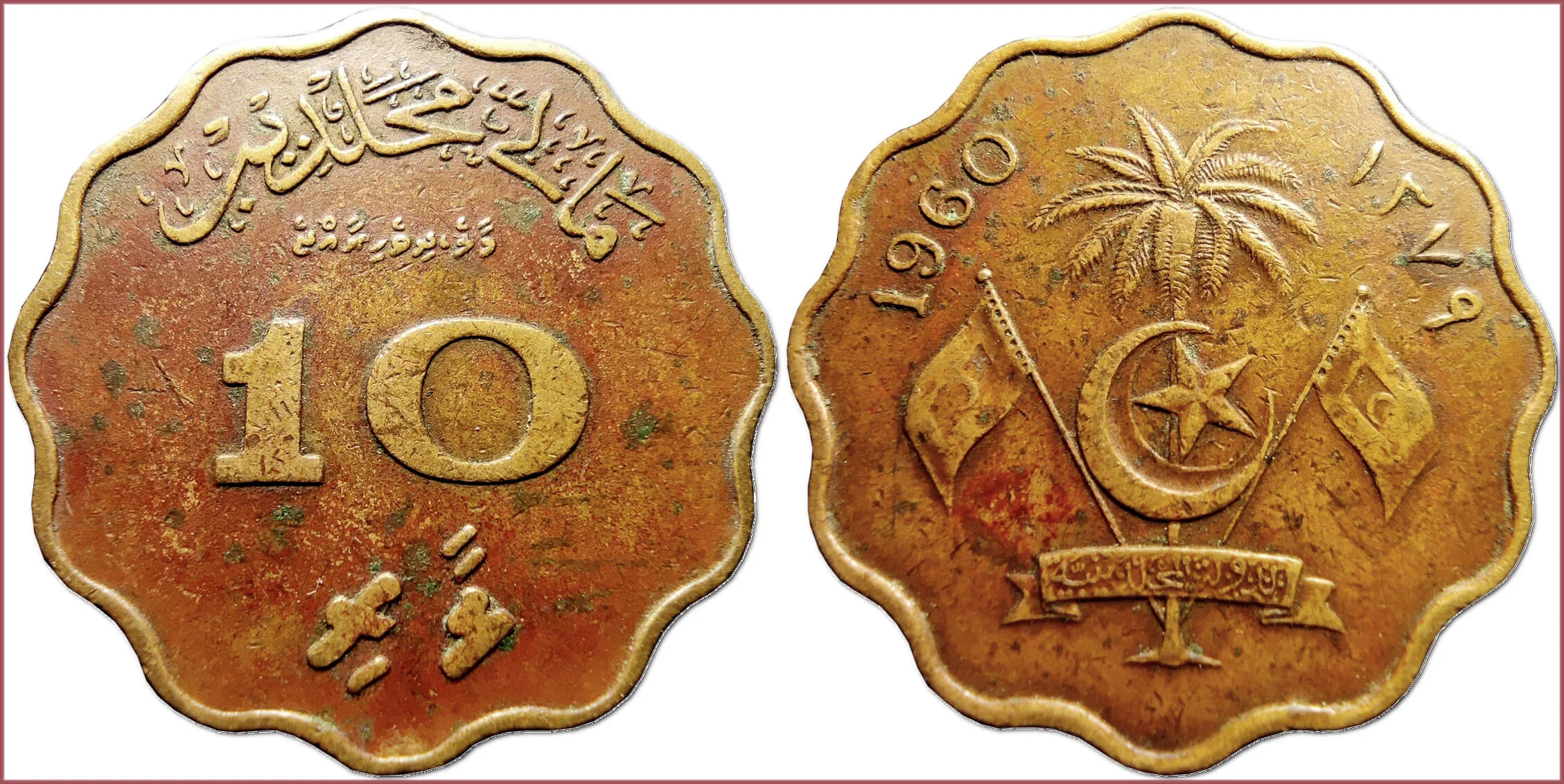LAARI: COIN OF MALDIVES
10 laari, 1960: Sultanate of the Maldives (British Protectorate)
Ruler: Muhammad Fareed Didi (Dhivehi "އަލްއަމީރު މުޙަންމަދު ފަރީދު ދީދީ") — the last Sultan of Maldives (1954-1968); was deposed in 1968 from the throne when Maldives became a Republic.
Date on coin: AH 1379 (AH: Latin "Anno Hegirae" — "the year of the Hijra"; Islamic calendar) = 1960 (Gregorian calendar).
Interestingly, the legend on the coin is written both in the official Maldivian language (Dhivehi) and in Arabic (Naskh script /one of the 6 traditional Arabic scripts/ — a smaller, round script of Islamic calligraphy; naskh is one of the first scripts of Islamic calligraphy to develop, commonly used in writing administrative documents and for transcribing books, including the Qur'an, because of its easy legibility).
10 ލާރި: l0 laari.
ماليه محلديب (Arabic) + މާލެ، ދިވެހިރާއްޖެ" (Dhivehi): approximate translation — "Land of the Dhivehi People" /Maldivians/, "Malé" /the capital and most populous city of the Maldives/.
1960 - ١٣٧٩ /1379/.
Emblem of Maldives: a coconut palm, a crescent, and two criss-crossing National Flags with the traditional Title of the State (Arabic "الدولة المحلديبية" — State of the Mahal Dibiyat /which is the name Ibn Battuta and other Medieval Arab travellers used to refer to the Maldive/.
Royal Mint (United Kingdom).
Mintage: 600.000.
Later (in 1979) a coin was issued in exactly the same design, but made of aluminum. The shape of the coins of both types is scalloped (12 notches).
- Nickel brass: 23 mm - 5.3 g
- Reference price: 3$
COIN LAARI — WHERE & WHEN (coins catalog: by names & emitents)
- MALDIVES (1960-...) — Sultanate of the Maldives + Republic of Maldives: laari = 1/100 rufiyaa
About the name of the coin laari (Dhivehi "ލާރި"): this modern exchange coin of the Republic of Maldives (like the previous Maldivian coin larin and the Georgian currency lari) derives its name from the term larin. We are talking about medieval larin, which was in circulation in the 16th-17th centuries on the Arabian Peninsula, in the Persian and Bengal bays, on Ceylon and other islands of the Indian Ocean. It is believed that larin first appeared in the Persian city of Lar. Larin was a piece of silver wire about 10 cm long, about 2 mm in diameter and weighing 4.5-5 g, bent in the shape of a fishing hook (letter C, J or S) and containing minted sayings from the Quran and the names of the rulers.

